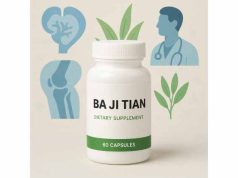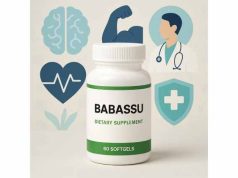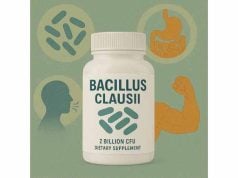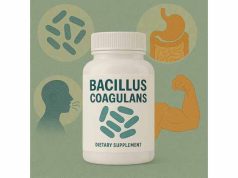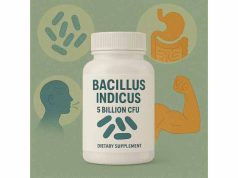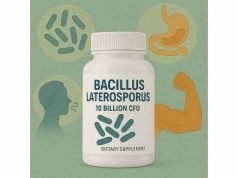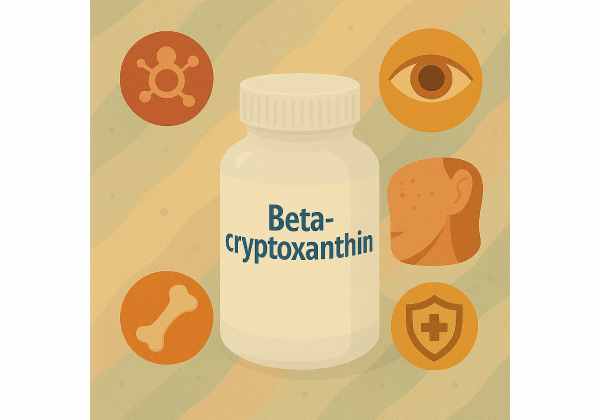
Beta-cryptoxanthin is a vibrant orange carotenoid found naturally in many fruits and vegetables, known for its potent antioxidant properties and ability to convert into vitamin A in the body. As both a powerful free radical scavenger and a provitamin A source, beta-cryptoxanthin supports immune health, vision, bone strength, and may help protect cells from damage and inflammation. Increasing research also suggests a role in supporting healthy aging, respiratory wellness, and reduced risk of certain chronic diseases. Whether you’re interested in boosting your diet with nutrient-rich foods or exploring supplements for specific health goals, this in-depth guide will help you understand everything you need to know about beta-cryptoxanthin’s benefits, safe usage, and best practices.
Key Takeaways
- Potent antioxidant and provitamin A: Beta-cryptoxanthin helps neutralize free radicals and is converted to vitamin A for vision, immunity, and cellular health.
- Supports bone, immune, and respiratory wellness: Linked to stronger bones, a resilient immune system, and may lower risk of certain chronic diseases.
- Found in colorful fruits and vegetables: Oranges, papaya, tangerines, and red peppers are excellent sources.
- Supplementation rarely needed: Most people can get enough through diet; high doses are not recommended without medical advice.
- Emerging research for healthy aging: May help protect against inflammation-related diseases and support long-term wellness.
Table of Contents
- What Is Beta-cryptoxanthin and Its Role in Nutrition?
- How Beta-cryptoxanthin Works: Antioxidant Mechanisms and Vitamin A Conversion
- Health Benefits and Primary Uses of Beta-cryptoxanthin
- Safety, Tolerability, and Side Effects of Beta-cryptoxanthin Supplements
- Optimal Dosage, Timing, and Best Practices for Beta-cryptoxanthin Intake
- Frequently Asked Questions About Beta-cryptoxanthin
What Is Beta-cryptoxanthin and Its Role in Nutrition?
Beta-cryptoxanthin is a naturally occurring carotenoid pigment, belonging to the same family as beta-carotene and lutein. It is responsible for the orange and reddish hues in many fruits and vegetables, such as papaya, persimmons, oranges, tangerines, peaches, and red peppers. In the human body, beta-cryptoxanthin serves two major functions: as a strong antioxidant and as a provitamin A, meaning it can be converted into active vitamin A (retinol) as the body needs it.
Where Is Beta-cryptoxanthin Found?
- Fruits: Oranges, tangerines, papayas, persimmons, peaches, mangoes
- Vegetables: Red peppers, pumpkin, sweet red corn
- Others: Egg yolks (to a small degree), some fortified foods
Why Is Beta-cryptoxanthin Important?
- Prov vitamin A activity:
Like beta-carotene, beta-cryptoxanthin is converted in the body to vitamin A, which is crucial for healthy vision, immune defense, reproduction, and cell growth. - Antioxidant properties:
It helps neutralize free radicals—unstable molecules that can damage cells and contribute to aging and chronic disease. - Potential unique health effects:
Recent studies suggest beta-cryptoxanthin may have specific roles in bone health, respiratory support, and reducing the risk of metabolic and inflammatory diseases, possibly due to its distinct molecular structure.
Comparison with Other Carotenoids
- Beta-carotene: Another provitamin A carotenoid, best known for its presence in carrots and sweet potatoes.
- Lutein & zeaxanthin: Focused on eye health but not convertible to vitamin A.
- Lycopene: Found in tomatoes; does not provide vitamin A activity but is a potent antioxidant.
Who Might Be Interested in Beta-cryptoxanthin?
- Individuals with low fruit and vegetable intake
- Those interested in natural antioxidant support
- People seeking plant-based vitamin A sources (vegetarians, vegans)
- Aging adults concerned with vision, immune strength, and bone health
Key Functions in the Body
- Maintains normal vision and supports night vision
- Promotes immune cell function and mucosal health
- Supports healthy bone metabolism and cell growth
- Provides antioxidant protection for cells and tissues
Dietary Patterns and Sources
Populations consuming traditional diets rich in tropical fruits and red-orange vegetables naturally receive higher beta-cryptoxanthin intakes. These patterns are linked to better overall health outcomes and lower incidence of certain chronic diseases compared to populations with low fruit and vegetable consumption.
Summary Table: Beta-cryptoxanthin Food Sources
| Food | Beta-cryptoxanthin (mcg/100g) |
|---|---|
| Papaya | 760 |
| Tangerine | 470 |
| Red pepper | 490 |
| Persimmon | 270 |
| Pumpkin | 210 |
Increasing your intake of these foods is the simplest way to boost your beta-cryptoxanthin status for optimal health.
How Beta-cryptoxanthin Works: Antioxidant Mechanisms and Vitamin A Conversion
Beta-cryptoxanthin delivers health benefits through several overlapping biological pathways—chiefly its antioxidant action and its conversion into vitamin A.
1. Antioxidant Action
Beta-cryptoxanthin helps protect your body’s cells from oxidative stress by neutralizing free radicals. Free radicals are unstable molecules produced during normal metabolism and in response to environmental exposures (pollution, UV rays, toxins). When left unchecked, they damage cell membranes, DNA, and proteins, increasing risk for chronic diseases and aging-related decline.
- Cell membrane stability: By embedding in cell membranes, beta-cryptoxanthin shields cells from oxidative damage and inflammation.
- Synergy with other carotenoids: When consumed as part of a varied diet, beta-cryptoxanthin works with other carotenoids and vitamins to enhance antioxidant defense.
2. Provitamin A Conversion
As a provitamin A carotenoid, beta-cryptoxanthin is enzymatically cleaved in the intestines and liver to produce retinol, the active form of vitamin A. This process is tightly regulated, ensuring your body produces only as much vitamin A as it needs, reducing the risk of toxicity.
- Vitamin A supports: Vision (especially night vision), immune response, reproduction, and the maintenance of healthy skin and mucous membranes.
3. Modulation of Inflammation
Emerging evidence indicates beta-cryptoxanthin may reduce inflammation by downregulating pro-inflammatory signaling molecules and genes. This action may explain its observed benefits for bone health, joint comfort, and chronic disease prevention.
4. Support for Bone and Respiratory Health
- Bone metabolism: Animal and human studies suggest beta-cryptoxanthin may stimulate bone-building cells (osteoblasts) while inhibiting bone breakdown (osteoclasts), potentially lowering the risk of osteoporosis.
- Lung function: Its antioxidant and anti-inflammatory properties support healthy respiratory tissues and may help protect against conditions such as asthma or chronic obstructive pulmonary disease (COPD).
5. Bioavailability and Absorption
Beta-cryptoxanthin, like all carotenoids, is fat-soluble, so it’s best absorbed when eaten with dietary fat (e.g., olive oil, avocado). Its absorption is influenced by:
- The food matrix (raw vs. cooked vs. juiced)
- Fat content of the meal
- Individual differences in gut health and genetics
Comparison to Other Carotenoids
Beta-cryptoxanthin is more efficiently converted to vitamin A than many other carotenoids (except beta-carotene), making it a valuable contributor to your overall vitamin A status—especially for those on plant-based diets.
Summary Table: Mechanisms of Action
- Neutralizes free radicals (antioxidant)
- Converts to vitamin A as needed
- Supports immune cell activity
- Modulates inflammatory responses
- May enhance bone and lung health
Health Benefits and Primary Uses of Beta-cryptoxanthin
Beta-cryptoxanthin’s unique structure and dual role as both an antioxidant and provitamin A have led researchers to explore its effects on multiple aspects of health. While studies are ongoing, current evidence highlights several primary uses and promising benefits:
1. Supports Healthy Vision
Like other provitamin A carotenoids, beta-cryptoxanthin helps maintain normal vision, particularly in low-light conditions, by providing a safe and controlled source of vitamin A. This is essential for retinal function and protecting against night blindness.
2. Immune System Reinforcement
Beta-cryptoxanthin supports immune defenses by:
- Enhancing the activity of white blood cells
- Maintaining healthy mucous membranes as barriers against pathogens
- Supporting the body’s antioxidant reserves, which are critical for immune cell function
3. Promotes Strong Bones and Joint Health
A growing body of research links higher dietary intake of beta-cryptoxanthin with:
- Increased bone mineral density
- Lower risk of osteoporosis and bone fractures in older adults
- Potential reduction in inflammation and cartilage degradation associated with arthritis
4. Reduces Risk of Chronic Diseases
- Anti-inflammatory effects: Beta-cryptoxanthin appears to lower levels of inflammatory markers, reducing risk for diseases rooted in chronic inflammation, such as metabolic syndrome and cardiovascular disease.
- Lung health: Epidemiological studies find higher intakes are associated with better lung function and lower risk of lung cancer in non-smokers.
5. Healthy Aging and Cognitive Protection
By fighting oxidative stress and inflammation, beta-cryptoxanthin may help slow age-related tissue degeneration, protect cognitive function, and promote longevity.
6. Potential Cancer Protection
Some observational research links higher beta-cryptoxanthin intake to reduced risks of certain cancers (e.g., lung, esophageal), especially when obtained from whole foods. The mechanism likely involves antioxidant protection and regulation of cell growth, though more research is needed before supplementation can be recommended for cancer prevention.
7. Skin and Cellular Health
Its antioxidant action helps protect skin from UV-induced damage and supports normal skin cell turnover. Beta-cryptoxanthin may also help maintain the health of cells lining the respiratory and digestive tracts.
Best Populations for Beta-cryptoxanthin Benefits
- People with diets low in fruits and vegetables
- Aging adults at risk for bone loss, immune decline, or vision changes
- Those seeking added natural antioxidant support for healthy aging and disease prevention
How Beta-cryptoxanthin Works Best
- Consumed as part of a diet rich in a variety of colorful produce, enhancing the synergy with other phytonutrients
- Used as a dietary supplement only when intake from food is insufficient, or under a healthcare provider’s guidance
Summary Table: Key Benefits of Beta-cryptoxanthin
- Maintains healthy vision and immune system
- Supports bone and joint health
- Reduces oxidative stress and inflammation
- May lower risk of chronic diseases (heart, bone, lung)
- Contributes to healthy skin and aging
Emphasizing natural food sources of beta-cryptoxanthin is the most effective way to leverage its full spectrum of benefits for lifelong health.
Safety, Tolerability, and Side Effects of Beta-cryptoxanthin Supplements
Beta-cryptoxanthin is generally recognized as safe when consumed as part of a varied diet rich in fruits and vegetables. Unlike preformed vitamin A, which can accumulate and cause toxicity, beta-cryptoxanthin’s provitamin A form is tightly regulated by your body. However, as with any supplement, it’s important to understand potential side effects, safety profiles for different populations, and any interactions with medications or other nutrients.
General Safety Profile
Most people tolerate beta-cryptoxanthin from foods without any adverse effects. The body efficiently manages absorption and conversion, using only what is needed and safely storing or excreting the rest. Toxicity from food sources is virtually unknown.
Side Effects and Potential Concerns
- Carotenodermia:
Overconsumption of beta-cryptoxanthin-rich foods or supplements may cause a harmless orange-yellow tint to the skin, especially on the palms and soles. This condition is called carotenodermia. It’s not dangerous and will resolve once intake is reduced. - Digestive upset:
Some individuals may experience mild gastrointestinal symptoms, such as bloating or diarrhea, particularly if taking very high doses of carotenoid supplements. - Interactions with medications:
While uncommon, very high intakes of carotenoids could theoretically interfere with the absorption of certain drugs (like statins, mineral oil, or bile acid sequestrants). Always consult your healthcare provider if you’re on prescription medications. - Supplement quality and purity:
As with all supplements, quality matters. Look for products that are third-party tested and free from unnecessary additives or contaminants.
Who Should Be Cautious with Beta-cryptoxanthin Supplements?
- Pregnant and breastfeeding women:
Getting beta-cryptoxanthin from food is both safe and recommended. Supplements should only be used if advised by a healthcare professional, as excess vitamin A (from any source) can be harmful in pregnancy. - Children:
Beta-cryptoxanthin from foods is safe for kids. Supplements are rarely needed and should be used under medical supervision. - Smokers and asbestos-exposed individuals:
While the lung cancer risk associated with high-dose beta-carotene supplements in smokers is well documented, similar data for beta-cryptoxanthin are lacking. Still, it’s wise to avoid unnecessary supplementation in these groups unless prescribed.
Allergic Reactions
True allergies to beta-cryptoxanthin are extremely rare. Most reactions stem from additives or fillers in poorly formulated supplements. Always check ingredient lists carefully if you have sensitivities.
Long-Term Use and Monitoring
Regular consumption of beta-cryptoxanthin-rich foods is considered very safe for long-term health. For supplements, periodic review with a healthcare provider ensures intake remains within recommended guidelines and is appropriate for your unique needs.
Tips for Safe Use
- Prefer food sources first:
Whole fruits and vegetables provide not only beta-cryptoxanthin but also a range of beneficial nutrients that work together. - Supplement only when necessary:
Consider supplements if you have limited access to colorful produce, specific dietary restrictions, or a medical need. - Choose quality products:
Select reputable brands with third-party testing and clearly labeled dosages. - Monitor for changes:
If you notice skin color changes or digestive issues, reduce or discontinue use and consult your healthcare provider.
Summary Table: Beta-cryptoxanthin Safety Guidelines
- Safe and non-toxic from food sources
- Rare, reversible skin discoloration possible with excess intake
- Mild digestive upset possible at high supplement doses
- Quality and purity of supplements are essential
- Supplements not needed for most people with a balanced diet
In conclusion, beta-cryptoxanthin is among the safest carotenoids when sourced from food. Supplements can play a role for select individuals, but always prioritize dietary sources for long-term well-being.
Optimal Dosage, Timing, and Best Practices for Beta-cryptoxanthin Intake
While beta-cryptoxanthin is gaining attention as a supplement, most people achieve optimal levels through their diet. If you’re considering supplementation for specific health goals or to address dietary gaps, understanding dosage, timing, and best practices is essential for safe and effective use.
How Much Beta-cryptoxanthin Do You Need?
- No official RDA:
There is no established Recommended Dietary Allowance (RDA) for beta-cryptoxanthin alone. Instead, vitamin A requirements are given as retinol activity equivalents (RAE), which include all sources (retinol, beta-carotene, alpha-carotene, and beta-cryptoxanthin). - Conversion:
About 24 micrograms (mcg) of dietary beta-cryptoxanthin provides 1 mcg of retinol activity, but this can vary by individual. - Typical dietary intake:
A balanced diet with ample fruits and vegetables usually provides 1–2 mg (1,000–2,000 mcg) of beta-cryptoxanthin per day, well within safe and beneficial limits.
Recommended Intake Strategies
- Emphasize whole foods:
- Prioritize oranges, papaya, red peppers, persimmons, and pumpkin for natural beta-cryptoxanthin.
- Eat a variety of produce for broader carotenoid benefits.
- Pair with healthy fats:
- Beta-cryptoxanthin is fat-soluble, so eating it with some dietary fat (olive oil, nuts, avocado) increases absorption.
- Supplementation:
- If using a supplement, common doses range from 1–3 mg per day.
- Supplements are rarely needed except in special circumstances (dietary restrictions, malabsorption, specific medical advice).
- Consistency matters:
- Regular, moderate intake over time is more effective than occasional large doses.
Timing and Administration
- Any time of day:
Take with a meal that includes some fat for best absorption. - No need for cycling:
There is no evidence that cycling on and off beta-cryptoxanthin is necessary. Steady intake is best.
Who Should Consider Supplementation?
- Individuals with limited access to fresh fruits and vegetables
- Those on restrictive diets (e.g., some elimination or medical diets)
- People with malabsorption syndromes (as advised by a healthcare provider)
- Individuals with increased vitamin A needs (as directed by a professional)
Who Should Avoid Supplements or Use Caution?
- Healthy adults meeting their vitamin A needs through diet
- Pregnant women (unless prescribed)
- Children (unless recommended by a pediatrician)
- Smokers and those with high lung cancer risk
Food vs. Supplements: What’s Best?
- Food sources:
Offer natural synergy with other nutrients, maximize safety, and lower the risk of excess. - Supplements:
May be helpful for those with higher needs or poor dietary intake but are not superior to a healthy diet.
Tips for Maximizing Benefits
- Mix raw and cooked sources for better absorption and variety.
- Consider juicing or pureeing fruits and vegetables to increase intake if needed.
- Combine different carotenoid-rich foods for a comprehensive antioxidant boost.
Summary Table: Practical Beta-cryptoxanthin Intake
| Approach | Amount | Notes |
|---|---|---|
| Food sources | 1–2 mg/day | Best for most people; found in colorful produce |
| Supplementation | 1–3 mg/day | Only as needed or prescribed |
| Absorption | With dietary fat | Eat with meals containing healthy fats |
Getting your beta-cryptoxanthin primarily from food supports not just vitamin A needs but also overall antioxidant and phytonutrient intake for whole-body health.
Frequently Asked Questions About Beta-cryptoxanthin
What foods are the best sources of beta-cryptoxanthin?
Top food sources include papaya, oranges, tangerines, red peppers, persimmons, and pumpkin. Including a variety of these in your diet ensures optimal intake of this powerful antioxidant carotenoid.
Can you take too much beta-cryptoxanthin?
It’s nearly impossible to overdose from food sources. Very high supplement intakes may cause harmless skin yellowing (carotenodermia), but serious side effects are rare. Stick to dietary sources and recommended supplement doses.
Does beta-cryptoxanthin help prevent disease?
Research links higher intake from foods to reduced risk of some chronic diseases, including osteoporosis and certain cancers. Benefits are strongest when consumed as part of a diverse, plant-rich diet rather than in supplement form alone.
Who should avoid beta-cryptoxanthin supplements?
Most healthy adults do not need supplements if their diet is rich in fruits and vegetables. Pregnant women, children, and smokers should only use supplements under medical supervision.
Is beta-cryptoxanthin safe for children?
Yes, when consumed through food. Supplements for children should only be given if prescribed by a healthcare provider.
How does beta-cryptoxanthin compare to beta-carotene?
Both are provitamin A carotenoids and potent antioxidants, but beta-cryptoxanthin is more efficiently absorbed and converted to vitamin A. They’re best consumed together as part of a balanced diet.
Does cooking affect beta-cryptoxanthin levels?
Cooking can make beta-cryptoxanthin more available for absorption, especially when cooked with a small amount of fat. However, raw foods are also good sources, so variety is key.
Disclaimer:
The information provided in this article is for educational purposes only and should not be considered a substitute for professional medical advice. Always consult a qualified healthcare provider before starting any new supplement, especially if you have medical conditions, are pregnant or breastfeeding, or take prescription medications.
If you found this article helpful, please share it with your friends and family on Facebook, X (formerly Twitter), or your favorite platform. Follow us for more science-based wellness guides—your support allows us to continue producing high-quality content for everyone!

